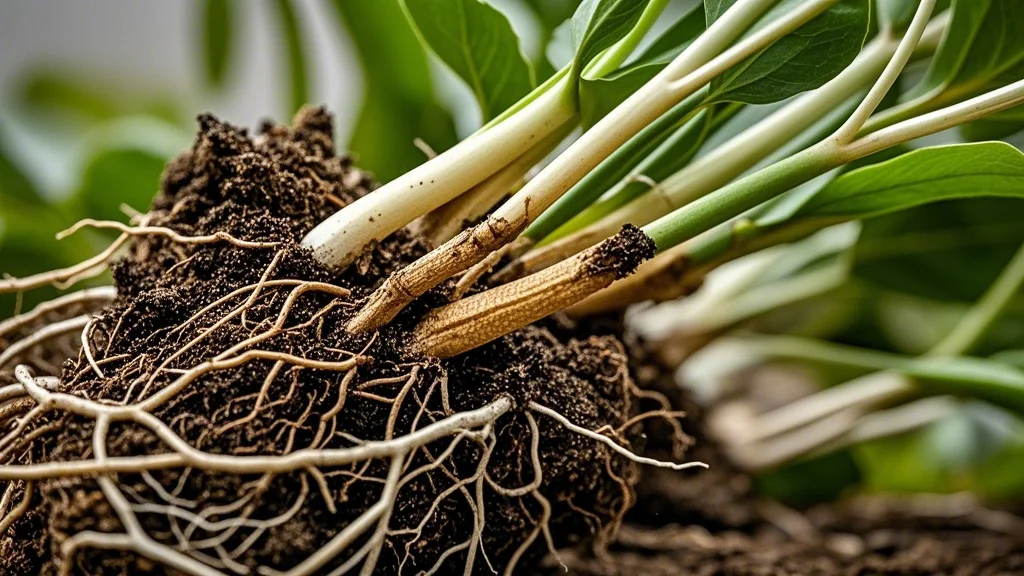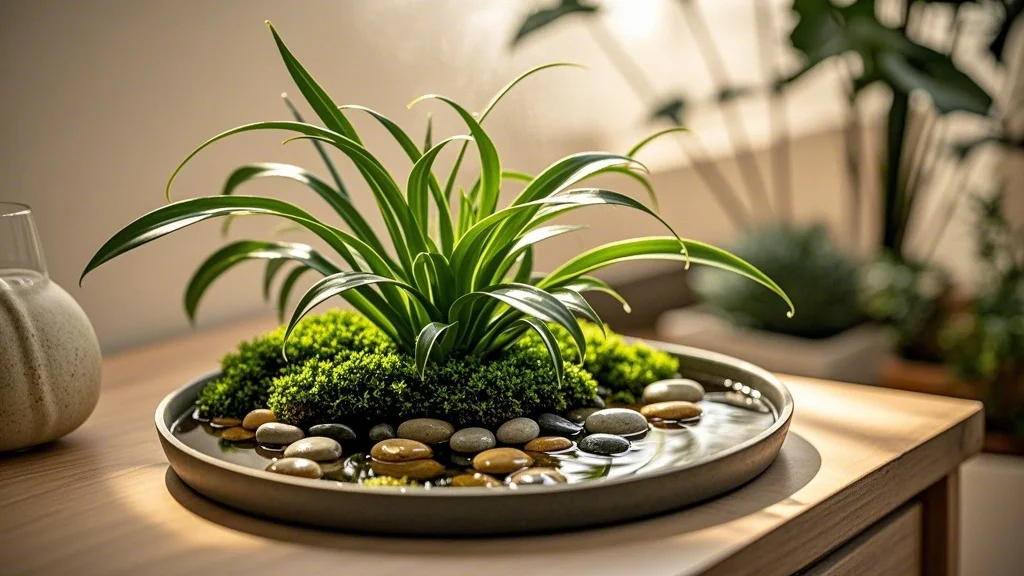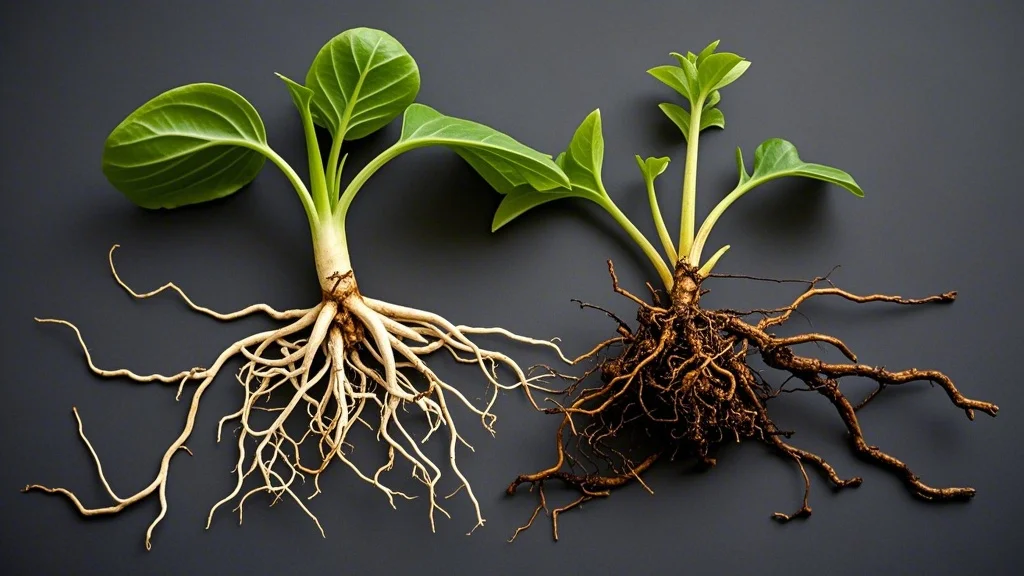For indoor plant enthusiasts and urban gardeners, maintaining the perfect balance of humidity is crucial for the health and longevity of your green companions. While water is essential for plant growth, too much moisture can lead to a common and potentially devastating problem: root rot. This article will explore the delicate relationship between humidity and root health, providing practical tips for creating an optimal growing environment for your houseplants.
Contents
Understanding Root Rot

Root rot is a condition that occurs when plant roots are exposed to excessive moisture for prolonged periods. This creates an ideal environment for harmful fungi and bacteria to thrive, leading to the decay of root tissue. As the roots deteriorate, they lose their ability to absorb water and nutrients, ultimately causing the plant to wilt and die if left untreated.
Symptoms of Root Rot
- Yellowing or wilting leaves
- Stunted growth
- Soft, brown, or black roots
- Foul odor from the soil
- Leaf drop
- Fungal growth on soil surface
The Role of Humidity in Root Rot
Humidity plays a significant role in the development of root rot. High humidity levels can:
- Slow down soil evaporation, keeping the growing medium consistently wet
- Encourage fungal growth on leaves and soil surface
- Reduce the plant’s transpiration rate, affecting its ability to uptake water and nutrients
Conversely, low humidity can also be problematic, causing:
- Rapid soil drying, leading to stress and underwatering
- Increased transpiration, potentially dehydrating the plant
- Vulnerability to pests that thrive in dry conditions
Finding the Right Humidity Balance

The ideal humidity level for most houseplants falls between 40% and 60%. However, some tropical plants may prefer higher humidity levels, while succulents and cacti thrive in drier conditions. To maintain appropriate humidity:
1. Use a Hygrometer
Invest in a reliable hygrometer to accurately measure the humidity in your plant’s environment. This will help you make informed decisions about adjusting moisture levels.
2. Group Plants Together
Clustering plants creates a microclimate with higher humidity as they release moisture through transpiration. This is especially beneficial for humidity-loving plants.
3. Use Pebble Trays
Place a tray filled with pebbles and water beneath your plants. As the water evaporates, it increases the local humidity without oversaturating the soil.
4. Mist Sparingly
While misting can provide a temporary humidity boost, it’s not a long-term solution and can lead to fungal issues if done excessively. Use this method judiciously, focusing on plants that truly benefit from it.
5. Employ a Humidifier
For consistent humidity control, especially in dry climates or during winter months, a humidifier can be an excellent investment. Choose one with adjustable settings to fine-tune the moisture output.
6. Proper Ventilation
Good air circulation is crucial for preventing fungal growth and maintaining balanced humidity. Use fans or open windows periodically to ensure fresh air movement around your plants.
Watering Practices to Prevent Root Rot
While managing ambient humidity is important, your watering habits play a crucial role in preventing root rot. Consider the following strategies:
1. Water Deeply but Infrequently
Allow the soil to dry out between waterings. This encourages roots to grow deeper and stronger, making them more resilient to rot.
2. Check Soil Moisture
Before watering, always check the soil moisture. Insert your finger about an inch into the soil – if it feels dry, it’s time to water. For larger pots, use a moisture meter for accurate readings.
3. Use Well-Draining Soil
Choose potting mixes that allow excess water to drain quickly. Add perlite or coarse sand to improve drainage for plants prone to root rot.
4. Ensure Proper Drainage
Use pots with drainage holes and empty saucers promptly after watering to prevent water from sitting at the bottom.
5. Adjust Watering Based on Season and Growth
Reduce watering frequency during winter or dormant periods when plants require less moisture. Increase watering during active growth phases, but always monitor soil moisture.
6. Consider Bottom Watering
For susceptible plants, try bottom watering by placing the pot in a tray of water for 15-20 minutes. This allows the plant to absorb water through the drainage holes without oversaturating the top layer of soil.
Recognizing and Treating Root Rot
Despite best efforts, root rot can still occur. Early detection and treatment are crucial for saving affected plants.
Identifying Root Rot
- Gently remove the plant from its pot
- Inspect the roots – healthy roots should be firm and white or light-colored
- Look for soft, brown, or black roots, which indicate rot
- Check for a foul odor emanating from the soil
Treating Root Rot
- Trim away affected roots using clean, sharp scissors
- Wash remaining healthy roots under running water
- Repot the plant in fresh, sterile potting mix
- Treat with a fungicide if necessary
- Adjust watering and humidity practices to prevent recurrence
Plant-Specific Humidity Needs
Different plants have varying humidity requirements. Here’s a quick guide to some common houseplants and their preferred humidity levels:
High Humidity (60-80%)
- Calathea
- Ferns
- Orchids
- Philodendron
- Monstera
Medium Humidity (40-60%)
- Pothos
- Spider Plant
- Peace Lily
- Dracaena
- Ficus
Low Humidity (30-40%)
- Succulents
- Cacti
- Snake Plant
- ZZ Plant
- Aloe Vera
Seasonal Considerations
Humidity management often requires adjustments throughout the year:
Winter
Indoor heating can significantly reduce humidity. Use humidifiers, group plants together, and consider moving plants away from heat sources.
Summer
In humid climates, focus on improving air circulation and reducing excess moisture. Use dehumidifiers if necessary and ensure proper spacing between plants.
Spring and Fall
These transitional seasons often provide ideal humidity levels. Monitor conditions and make minor adjustments as needed.
Technology for Humidity Management
Modern technology offers several tools to help manage humidity:
- Smart Sensors: Wi-Fi-enabled devices that monitor humidity and send alerts to your smartphone.
- Automated Humidifiers: Programmable units that maintain consistent humidity levels.
- Climate Control Systems: Integrated solutions that manage temperature, humidity, and lighting for optimal plant growth.
Conclusion
Managing humidity to prevent root rot is a delicate balancing act that requires attention to detail and a good understanding of your plants’ needs. By implementing the strategies outlined in this article, you can create an environment where your indoor plants thrive, free from the threat of root rot. Remember that each plant is unique, and it may take some experimentation to find the perfect balance. With patience and care, you’ll be rewarded with healthy, vibrant plants that bring life and beauty to your urban space.
By mastering the art of humidity control and proper watering techniques, you’re not just preventing root rot – you’re setting the stage for a thriving indoor garden. As you become more attuned to your plants’ needs, you’ll find that maintaining this balance becomes second nature, allowing you to enjoy the full benefits of your green companions with confidence and peace of mind.







